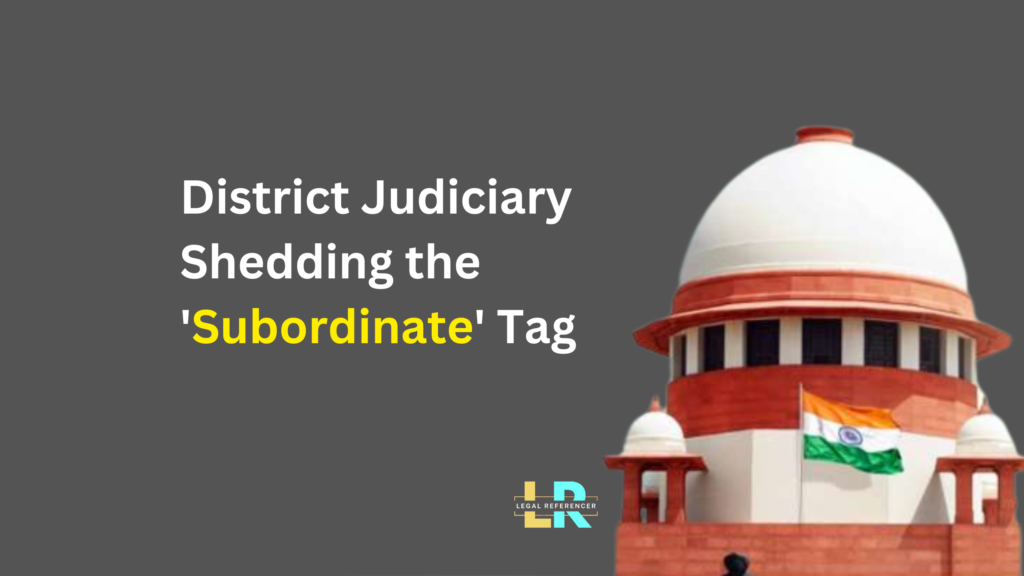All India Judges Association v. UoI And Ors. WP(C) No. 643/2015
Introduction:
In a recent judgment concerning enhanced pay scale for judicial officers, the Supreme Court of India made a significant declaration, stating that the District Judiciary should no longer be referred to as the ‘subordinate judiciary.’ The judgment recognizes the crucial role played by the District Judiciary and emphasizes the need to accord respect and recognition to this institution. This article explores the Supreme Court’s decision and highlights the importance of the District Judiciary in the Indian judicial system.
The Judgment:
The judgment, delivered by a bench comprising Chief Justice of India DY Chandrachud, Justice V Ramasubramanian, and PS Narasimha in the case of All India Judges Association vs. Union of India and others, rejects the term ‘subordinate judiciary’ for the District Judiciary. Justice Narasimha’s authored judgment begins with a clear assertion that this nomenclature is both a misnomer and disrespectful to the constitutional position of a District Judge. The Constitution recognizes and protects the District Judge as a vital component of the judicial system, deserving respect and acknowledgment for their contributions.
Importance of the District Judiciary:
The Supreme Court, in its judgment, reaffirms that the District Judiciary is the backbone of the judicial system. It recognizes the essential function of both the District Court and the High Court to administer justice impartially and independently. The court emphasizes the need to secure the financial security and economic independence of the District Judiciary to ensure their impartiality. The independence of the District Judiciary is considered vital for the overall functioning of the judicial system.
Integration of Judicial System:
The judgment also stresses the need for integration in terms of pay, pension, and other service conditions between the District Judiciary, the High Courts, and the Supreme Court. The Court asserts that to achieve a truly unified judicial system, there must be equality in terms of remuneration and benefits for judges across all levels of the hierarchy. By recognizing the unified function of all judges in adjudicating disputes impartially and independently, the judgment aims to foster a sense of equality and cohesion within the judiciary.

Changing the Perception:
The Supreme Court’s stance on the nomenclature of the District Judiciary is not new. Chief Justice DY Chandrachud had previously expressed the need to change the perception of district judges being subordinate. He emphasized that district judges should not be referred to as subordinate judges as they belong to the District Judiciary, which plays a pivotal role in the administration of justice. This recent judgment aligns with his vision of fostering a culture of equality and respect within the judiciary.
Also Read: https://legalreferencer.in/pil-in-the-delhi-high-court-2000-notes/
Conclusion:
The Supreme Court’s judgment challenging the use of the term ‘subordinate judiciary’ to refer to the District Judiciary is a significant step towards recognizing the importance of district judges and their contributions to the Indian judicial system. By emphasizing the need for financial security, economic independence, and integration within the judiciary, the judgment seeks to strengthen the District Judiciary and ensure the impartial and independent administration of justice. This decision marks a positive shift in the perception of district judges and serves as a reminder of the vital role they play in upholding the rule of law in India.